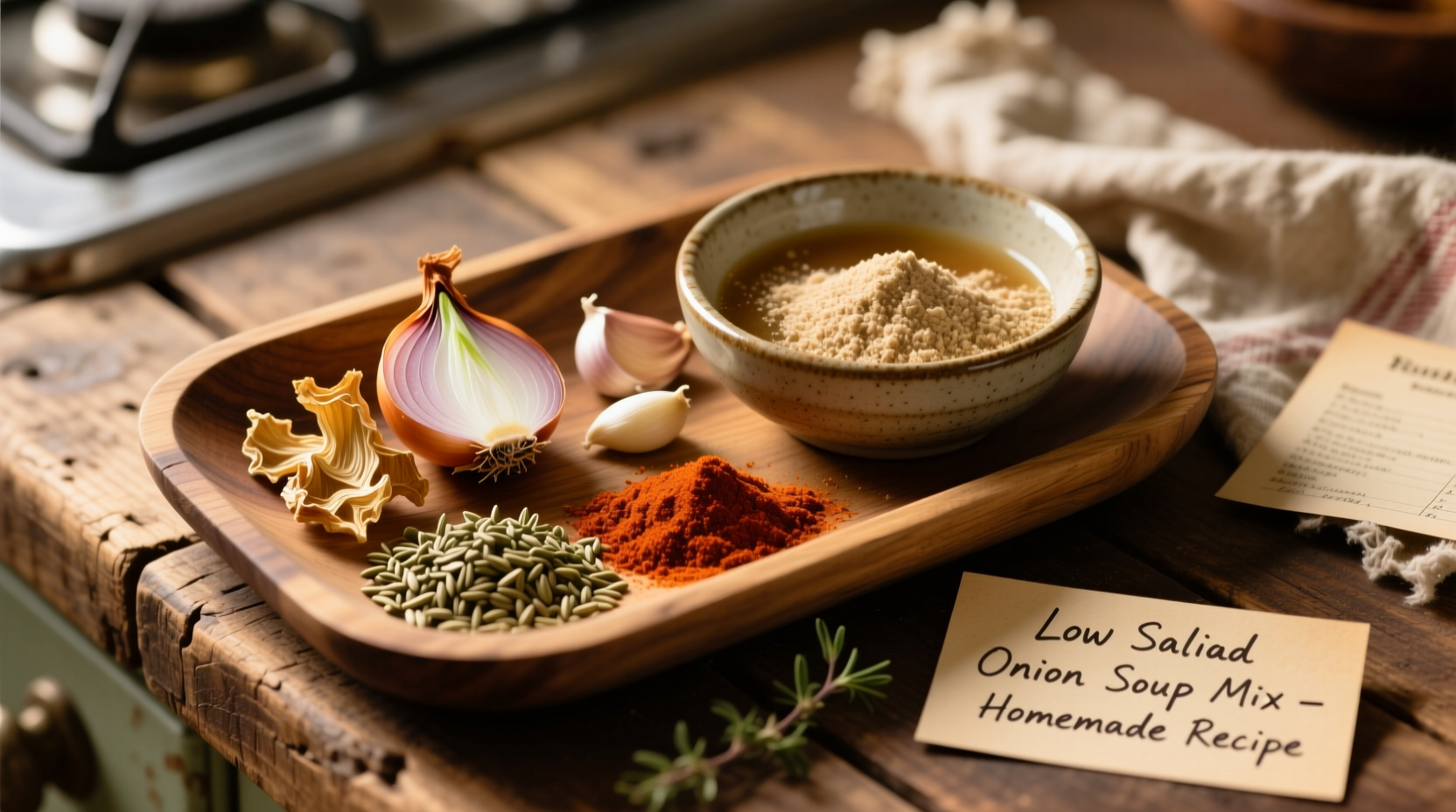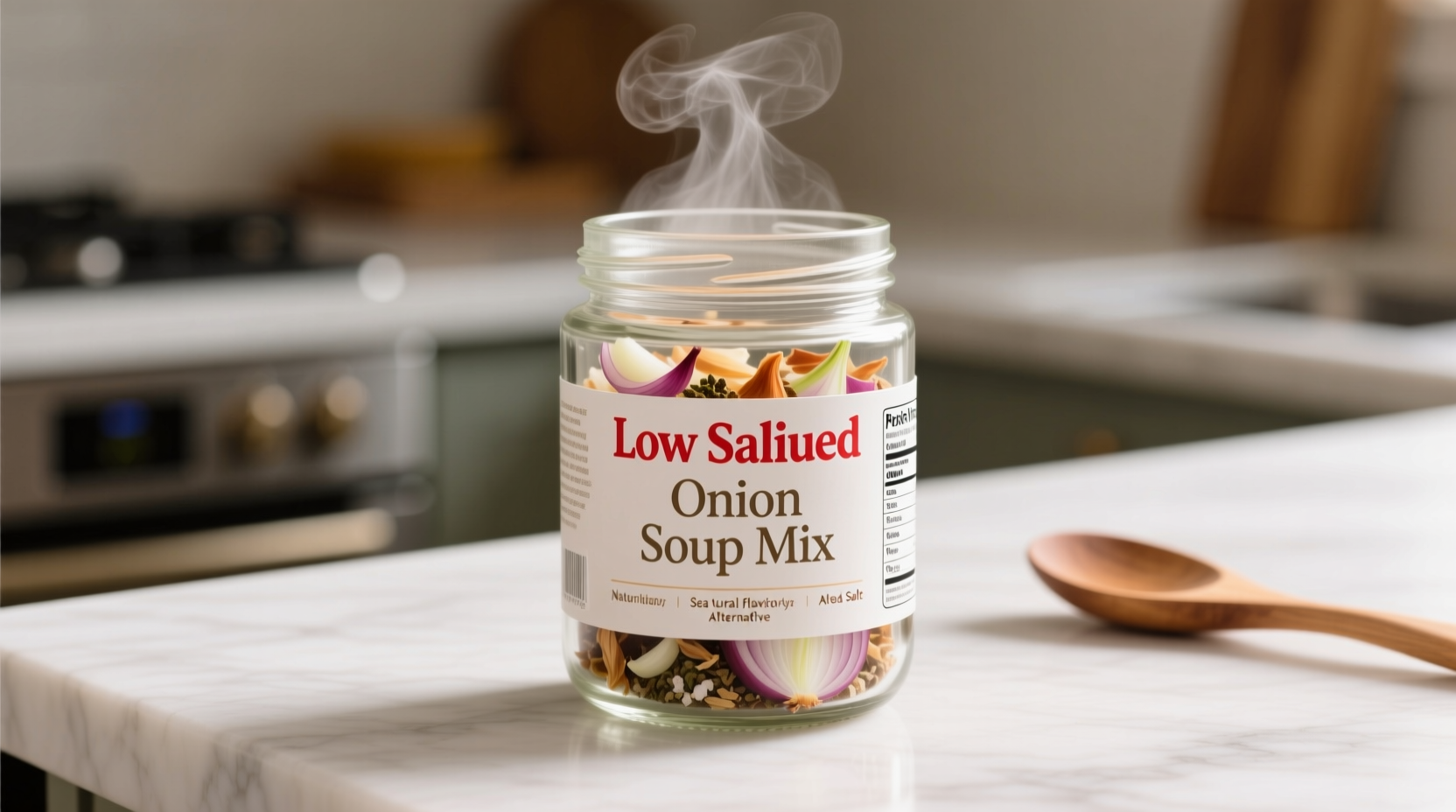Why Sodium Reduction Matters for Health-Conscious Cooks
Understanding sodium content in pantry staples is crucial for maintaining heart health. The Centers for Disease Control and Prevention reports that over 70% of dietary sodium comes from processed foods, not added table salt. When selecting onion soup mix, the difference between regular and low sodium versions can account for up to 25% of your daily recommended sodium limit in just one serving.
| Product Type | Typical Sodium per Serving | % of Daily Limit (2,300mg) | Heart-Healthy Alternative |
|---|---|---|---|
| Regular Onion Soup Mix | 700-900mg | 30-39% | No |
| "Reduced Sodium" Label | 350-500mg | 15-22% | Limited |
| True Low Sodium Mix | 140-250mg | 6-11% | Yes |
| Homemade Version | 50-100mg | 2-4% | Ideal |
According to the American Heart Association, most Americans consume more than 3,400mg of sodium daily—far exceeding the recommended 1,500mg limit for optimal heart health. This overconsumption significantly increases hypertension risk, with the CDC reporting that nearly half of US adults have high blood pressure.
Decoding Labels: Finding Genuine Low Sodium Options
Not all "low sodium" claims are equal. The FDA defines specific labeling terms that manufacturers must follow:
- "Sodium-free": Contains less than 5mg per serving
- "Very low sodium": 35mg or less per serving
- "Low sodium": 140mg or less per serving
- "Reduced sodium": At least 25% less sodium than regular version
Many products use "reduced sodium" labeling while still containing substantial amounts. True low sodium onion soup mixes should contain 140mg or less per serving to qualify for the official designation. Always check the nutrition facts panel rather than relying solely on front-of-package claims.

Maximizing Flavor Without Excess Sodium
Reducing sodium doesn't mean sacrificing taste. Professional chefs use several techniques to maintain rich flavor profiles:
Flavor Enhancement Strategies
- Acid balancing: Add 1-2 teaspoons of vinegar or lemon juice to brighten flavors
- Umami boosters: Incorporate mushrooms, tomato paste, or nutritional yeast
- Aromatic layering: Sauté onions slowly to develop natural sweetness
- Herb infusion: Use fresh thyme, rosemary, or bay leaves during cooking
When substituting low sodium mix in recipes calling for regular versions, increase other flavor components proportionally. For example, if a recipe specifies one packet of regular mix, add an extra clove of garlic or half a teaspoon of dried herbs to compensate for the reduced sodium content.
Top 5 Culinary Applications for Low Sodium Mix
Low sodium onion soup mix shines in these applications where flavor depth matters most:
- Healthy meatloaf binder: Replace breadcrumbs with 1/3 cup low sodium mix for moisture and flavor without excess salt
- Lightened French onion soup: Use as base with reduced-sodium broth for authentic flavor
- Marinade enhancer: Mix with olive oil and vinegar for tenderizing proteins
- Vegetable gravy base: Combine with mushroom broth for holiday sides
- Healthy casserole topping: Mix with whole grain breadcrumbs for crunch
Creating Your Own Custom Low Sodium Blend
For complete control over ingredients and sodium content, make your own blend:
Basic Homemade Low Sodium Onion Soup Mix
Yield: 1/4 cup (enough for one recipe serving)
- 2 tablespoons dried minced onion
- 1 tablespoon nutritional yeast (for umami)
- 1 teaspoon garlic powder
- 1 teaspoon onion powder
- 1/2 teaspoon dried thyme
- 1/2 teaspoon dried parsley
- 1/4 teaspoon black pepper
- 1/8 teaspoon celery seed
- 1/8 teaspoon paprika
Store in an airtight container for up to 6 months. This version contains approximately 50mg sodium per serving—less than any commercial product. Customize by adding smoked paprika for depth or a pinch of cayenne for heat without increasing sodium.
When Low Sodium Mix Isn't the Best Choice
Consider these limitations before substituting:
- Texture differences: Some low sodium versions use alternative thickeners that affect final dish consistency
- Flavor profile variation: Reduced sodium blends may taste more acidic or herbal to compensate
- Recipe compatibility: Works best in moist applications; not ideal for dry rubs where salt provides texture
- Special dietary needs: Those with severe sodium restrictions may need completely salt-free alternatives
For individuals managing conditions like chronic kidney disease, even low sodium mixes may exceed recommended limits. Consult with a registered dietitian for personalized guidance on sodium management.











 浙公网安备
33010002000092号
浙公网安备
33010002000092号 浙B2-20120091-4
浙B2-20120091-4